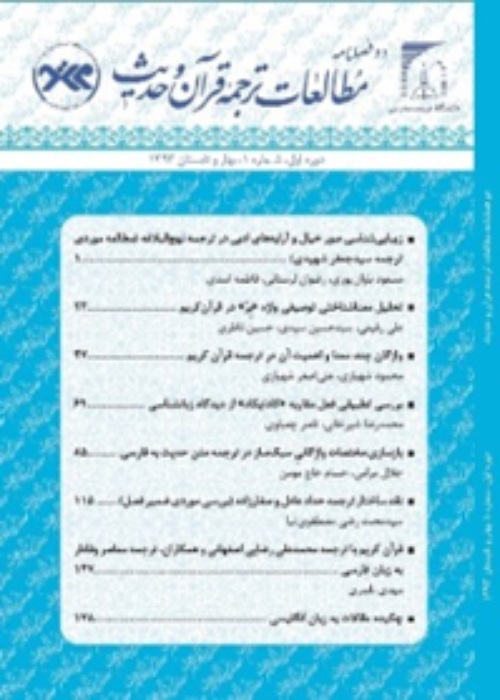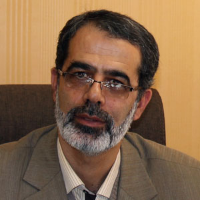The equivalent of the cultural element of clothing in the Holy Qur'an based on Newmark's theory (A case study of five Persian translations of Holy Quran: Ayati, Bahrampour, Fouladvand, Mojtabavi, and Makarem Shirazi)
Author(s):
Article Type:
Research/Original Article (دارای رتبه معتبر)
Abstract:
Translation is one of the most prominent intercultural fields that has seen ups and downs over the past years and it grows steadily. An important aspect of translation is the cultural issue. Since cultural elements belongs to a particular people and groups and differ according to their speech, deeds and tastes, will face the converting of meaning to the target language with problem; ﹾindeed, these problems are rooted in the amount of translator knowledge about the cultural elements in the source language. Peter Newmark (1988) is one of the most famous experts in the field of translating cultural elements. Newmark has divided cultural elements into five categories and provided fifteen methods for their translation. The present study evaluates five Persian translations of the Quran, regarding to Newmark's theory, using a descriptive-analytical method. The criteria for these selecting translations are the specifics method of each translation in their writing style. However, those mentioned translations have been created between 1988s and 2004s. In this research, the translation of the materialistic culture of clothing in the Quran has been studied and its purpose is to know which of the fifteen methods of cultural translating elements has a greater role in translating of clothing element?
The results of the research indicate that translators have often chosen literal translations and they have chosen the cultural equivalent, and semantic method to translate the cultural elements.
The results of the research indicate that translators have often chosen literal translations and they have chosen the cultural equivalent, and semantic method to translate the cultural elements.
Keywords:
Language:
Persian
Published:
Translation Studies of Quran and Hadith, Volume:5 Issue: 9, 2018
Pages:
79 to 106
https://magiran.com/p1888342
مقالات دیگری از این نویسنده (گان)
-
مفهوم سازی استعاری ماهیت آمریکا در صحیفه نور امام خمینی (ره)
*، حسین بیات
پژوهشنامه انقلاب اسلامی، تابستان 1403 -
Semantic Analysis of the Eschatological States of the Righteous and Sinners in the First Half of the Noble Qur'an Based on the Conceptual Blending Theory
Hossein Bayat, *, Ali Zeighami
Journal of Stylistic Studies of the Holy Quran,



